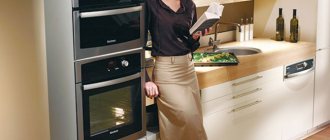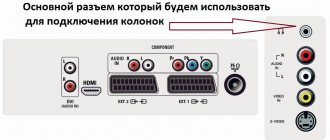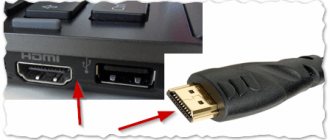How to properly connect a gas stove to a cylinder?
The lack of gas supply in private homes has become not just a problem, but a real headache for the residents of Russia. Most settlements still do not have installed gas pipes, and installing a pipe on the site where a private house is located costs from 155,000 to 320,000 rubles. Yes, such an amount is not affordable for everyone. It is still possible to solve the problem if you use cylinders. Despite the fact that it requires refilling and replacement requires care and attention, anyone can connect a gas stove to a cylinder.
Gas cylinder in the country - advantages and disadvantages
When a person just moves into a private house that is not connected to a gas pipeline, he finds himself at a crossroads - use an electric stove, or connect a gas stove, but use cylinders? Both solutions have a number of advantages and disadvantages.
The positive aspects of a gas cylinder are:
A gas burner will heat everything several times faster. Cooking time will be significantly reduced, which means you will have more time for yourself or your family.- The cost of refilling is much less than paying bills for used electricity. The only exception may be when you use electricity at preferential rates, for example, for people living in villages. There is also a discount on utility bills for those considered low-income.
- In certain regions, the rate of electricity consumption per person registered in the premises is limited to 50 kW per month, and if the limit is exceeded, the price increases.
Now about the disadvantages:
- Transportation costs, since there are gas stations, but they are much smaller than gasoline ones.
- It is impossible to know exactly how much fuel was filled into the cylinder.
- Installation of gas stoves in rooms where there is no ventilation is prohibited.
When we have figured out all the pros and cons, and you have decided to install cylinders, you can talk about where to place the fuel and stove.
Where to install the gas cylinder
You can, of course, place the cylinder in the room where the stove is located. However, in order to sleep more peacefully, I advise summer residents to choose the option of installing it in a metal box outside . It is convenient to have a box that can accommodate not one, but two cylinders at once. If two cylinders are used, then the housewife will never be left without a working stove in the kitchen.
As soon as the gas in the first cylinder runs out, you move the second full cylinder in its place and there is quite a sufficient period of time to refill the empty first one without fuss and unnecessary haste.
According to the rules, there must be at least 0.5 meters from the building window to the nearest wall of the gas box and at least 0.5 meters from the window to the gas inlet into the room .
Gas cylinder in a metal box, on the street.
The best place to install a metal box with a gas cylinder will be a shady place near the northern wall of the building in which the kitchen is located. So that the summer sun's rays do not heat the cylinder. Do not forget that it is always better to close the tap on the gas cylinder after you have finished cooking on the stove.
In addition, keep in mind that in order to change empty cylinders for new ones, you will have to take care of a convenient approach to the metal box, especially considering the considerable weight of a fully filled cylinder - 43 kg.
After choosing a place for the gas box. a neat non-combustible foundation for the cabinet Having reliably checked the horizontal and vertical lines, we install the cabinet and fasten it in place (the cylinder inside the cabinet should not stand at an angle).
Below, at the bottom of the gas cabinet, holes are needed for ventilation. Install a lock on the cabinet doors - for country life there is no way without locks.
General useful information
Placement
So, first, let's decide where to install the tank. If you connect a gas cylinder to the stove in the country, you can place it not far from the stove in the kitchen. But if you install it in the house where you permanently live, it is better to allocate a separate room for storing the cylinder or install it in a metal cabinet outside, as this is safer.
If you plan to store gas at sub-zero temperatures, please note that you should only buy a propane-butane mixture that is marked “winter”, otherwise it will not be used up all. Another advantage of installing a cylinder on the street is that there are no gas leaks in the living space (if this suddenly happens).
By the way, installation in unventilated rooms, as well as below ground level (for example, in a cellar/basement) is not permissible. The fact is that propane is heavier than air, and therefore, in the event of a leak, it will begin to accumulate, and at a ratio of 2.35 to 9.55% to air, propane can even form an explosive mixture. Also, the distance from the kitchen stove to the gas cylinder must be at least 1 meter, and also at least 1 meter from heating appliances.
Installation diagram
To connect the stove to gas in a country house and a permanent building, different schemes are used. So, how to connect a gas cylinder to a stove in a residential building? In this case, it would be rational to have a supply in the form of several cylinders, which will be stored in a separate cabinet. The latter must be installed on a concrete foundation, the height of the base of which will be 25-30 cm above ground level. The distance from the wall of the building to the cabinet should be 50 cm, and from the slab to the pipe passing through the wall at least 20 cm. It is also worth considering that you cannot install a cabinet with cylinders from the side of the facade of the house and the transport passage.
How to supply a summer kitchen with gas
To correctly connect a gas stove to a cylinder at the dacha, use the following diagram:
- The stove should be installed no closer than 75 mm from the wall - this distance is required so that the hose connected to the fitting does not bend.
- The cylinder should be installed at a distance of at least 1 meter, and the hose that will be used for connection must be at least 150 cm in size.
- To securely fix it in a vertical position, you should fasten the hose with a clamp that will be mounted into the wall.
All detachable-type connections must be within the access area to monitor them and check for leaks. Under no circumstances should spare cylinders be kept in residential premises, even for a short time. Safety and operating rules state that such cylinders should also not block the escape route in case of fire.
Types of gas tanks
In order to deliver gas to the place of use, several standard tank sizes are used. For frequent use, it will be easier to buy a large cylinder, while for use in the country, you can choose a smaller container. Such a cylinder will be convenient to transport and it will be easier to find a place for it in tight spaces. The cylinders have a number of characteristics:
| Volume (liters) | Weight of container when unfilled (kg) | Full container weight | Amounts of gas in m3 | Acceptable refueling limits (liters) |
| 5 | 4 | 6 | 0.95 | 4.25 |
| 12 | 5.5 | 11 | 2.6 | 10.1 |
| 27 | 14 | 26 | 5.39 | 13 |
| 50 | 22 | 43.2 | 10 | 42.5 |
Please note that the volume of gas (propane) poured will be less than the volume of the container itself. This is due to the safety of the cylinder, since gas filled in the winter will begin to expand in a warm room and can even rupture the cylinder if it contains more gas than required by regulations.
How to properly connect a gas stove to a gas cylinder - Rmnt.ru
Hello! Connecting gas appliances is a very important matter and requires special attention. First of all, make sure that the stove that you already have is designed specifically for use with propane, which is used to fill cylinders, because regular gas from the mains has a slightly different composition.
If this stove is designed for household gas, then the burner nozzles will need to be replaced. It is better to entrust this to gas specialists, although there is nothing complicated about it, but the injectors themselves are not so easy to find. Next, you need to install the stove on a strictly horizontal surface and make sure that the room is ventilated.
Now about the cylinder - they come in steel, with a volume of up to 50 liters, this volume of gas will last you for a very long time. But a steel cylinder also has its drawbacks - the steel rusts, and the color of the cylinder does not last forever. Now there are polymer-composite and composite cylinders on sale. Their capacity is somewhat smaller - a maximum of 33.5 liters, but such cylinders do not rust, that is, you will be insured against gas leaks.
After this, you need to purchase a special gas reducer. Yes, I note that if you buy a cylinder with a volume of 33.5 liters, then a reducer is included with it. After this, you need to determine where the cylinder will be located. Considering that the hose connecting the stove and the cylinder should not be more than one and a half meters, this is important.
Although gas cylinders are quite reliable, they should be placed in a place protected from direct sunlight. Now we proceed directly to attaching the plate. To do this, you need a special gas hose; on one side it has a nut corresponding to the fitting of the stove, and on the other - just a hose that is attached to the reducer using a clamp.
This is done so that the hose can be cut to the required length. I note that the gas hose requires constant inspection, at least once a year, to ensure there are no kinks or cracks on it, so take this into account when laying the route.
Next, about the most important thing - the connection of the plate and the cylinder. To do this, you need to lay the hose in such a way that it does not “break”, does not come into contact with sharp corners of furniture, and is not “pinched” by anything.
To connect the hose to the stove, use a paronite gasket, and on the side of the cylinder, use a screw clamp of a suitable diameter. Yes, when tightening the clamp, make sure that it is tightened tightly, but does not cut the hose itself. That's probably all.
Now all that remains is to open the cylinder valve and make sure that all connections are secure and there is no gas leakage. If there is none, then use the stove and have fun. Good luck to you!
Necessary equipment
The list of everything needed to properly connect a gas cylinder with liquefied blue fuel looks like this.
- A working stove, although not new, but all the burners are intact and intact.
- Reducer for the cylinder - you must buy it with threads and nuts made of brass, for fire safety reasons, with a pressure of at least 30 mbar.
- The gas hose must be selected one and a half meters more than the actual distance to the storage location of the cylinder in order to eliminate its tension when connecting.
- Various connection devices - this applies only to old products; new gas stoves are equipped with everything necessary.
- A copper-plated tool, so as not to accidentally create a spark when it falls or comes off the nut (such are the requirements of the rules for working with gas equipment, and they should not be neglected).
- To seal all joints, ordinary fum tape or flax tow is suitable.
- For a propane gas cylinder, it is best to install a special iron box, which should be locked with a key, especially if there are small children in the family.
- After completing all the work, you will need a soap solution, which must be used to treat all connectors and each connection, as well as the handles of the gas stove - this is done to detect gas leaks.
Very important! To connect a liquefied propane cylinder to a gas stove, you can only use a new special hose, and not an old one from the garage: even with proper storage, it may have internal microcracks.
Work algorithm
The first step is to decide where the gas cylinder will be located; there are three types of correct installation.
- Outside a living space, in the yard, in a special metal box - fire inspectors will thank you.
- The first option is not always possible, so they install the cylinder in the pantry next to the kitchen, and drill a hole in the common wall for the hose.
- If there is no other place, but only in the immediate vicinity of the stove, then it is placed no closer than 1 meter. For safety, you need to build a mount made of wood or buy a special metal cabinet.
Important! The rules for using gas equipment allow the installation of a shielded gas container no closer than half a meter from the stove without additional fences.
Users should also be aware that a mixture of propane and butane is pumped into the cylinders, which is heavier than oxygen, and according to the laws of physics, such fractions can accumulate in unventilated areas - therefore, such equipment should not be installed in basements.
Connection to plate
This is the safest work, regardless of where it is performed - at the dacha or in the urban private sector, because the gas has not yet been connected, so there is nothing to fear. If there is a threaded connection, then we wrap the sealing tape around the thread and tighten the nut until it stops. Before doing this, you need to check the presence of an O-ring inside the nut on the hose, as shown in the photo.
Connecting the cylinder
All commercially produced gas stoves are designed to use fuel at low pressure, so when connecting the cylinder to the stove, you need a reducer that will provide it.
This product is installed on a cylinder; the thread is left-handed, so it must be screwed to the left, and not according to the pattern familiar to many users. For safety, all nuts and threaded connections are made of brass.
Connection is made after careful inspection of all parts:
- there should be no dirt or dust, especially on the threads and inside the nut, on the gearbox and gas container;
- the main attention should be paid to the hose - it must be of the required length with a margin, have no signs of mechanical damage or cracks, and the period of use must correspond to the installation date;
- All clamps must be new, it is better to use them with an anti-corrosion coating, for durability, taking into account the temperature difference in the autumn-winter period.
After completing the work on connecting the cylinder, we perform a visual check of the correct connection, and only then begin the final stage.
Check for leaks
Now it's time to use a pre-prepared solution of water and soap. We carefully open the valve on the gas container - a hissing sound is heard, which confirms the proper function of the gearbox. Now we take soap foam with a soft foam sponge and apply it to all connections - if bubbles appear, you need to tighten the nuts.
If the foam remains motionless, it means that the quality of the connection is excellent, and there is nothing to worry about; you can turn on the stove and check the stability of combustion.
Perhaps insecure home craftsmen will find this video useful:
A little about gas cylinders
They are usually made of metal, but the industry does not stand still - today special containers made from the following components are already on sale:
- very easy to use, lightweight, explosion-proof products made from fiberglass threads with the addition of epoxy resin;
- cylinders made of a symbiosis of metal and composite materials.
Such containers are designed for a capacity of 5-50 liters; at dachas they are connected to stoves, gas heating boilers, smokehouses, and special installations for grilling or barbecuing.
Cylinders should be refilled only at special stations, where condensate must also be drained from the inside.
We must remember that only 40 liters are pumped into a 50-liter cylinder, so the price should be appropriate.
If the stove is not in use, then the valve must be tightened; the same operation must be performed when changing cylinders.
It is better if the connection of the gas cylinder, as well as the connection of the stove to the gas pipeline, is carried out by a gas service specialist.
Variations of gas stoves for the garden
These household appliances for use in the country can be equipped with a variety of jets or nozzles. Such parts have special holes of a clearly defined diameter, through which flammable gas penetrates into the burner.
Modern gas stoves
When selecting a stove for your dacha, you must take into account all the features of modern models, including the presence of electric ignition, the presence of a timer and an important safety system called “gas control”.
Slabs for a country house are divided into two groups due to differences in their design. There are tabletop gas stoves for cottages under a cylinder and floor-mounted types.
Tabletop gas stoves
The tabletop type is convenient due to its small size and the fact that they can be easily transported from place to place. This is especially true if you only spend time at your dacha in the summer. For the winter, such a stove can be taken to the garage or placed on the balcony.
Floor types
Floor plates are convenient because they are equipped with all the necessary functions in the form of an oven, grill or barbecue. Based on the size of your kitchen, you can always purchase a stove with one, two, four or six burners.
Installation of the plate to the cylinder
How does the process of installing a gas stove to a cylinder take place? To do this, you will definitely need a gas reducer with a special output pressure of 30 mbar, as well as a gas hose made of rubber or a mixture of rubber and polymer and a fitting with a thread inside.
The sequence of actions is as follows:
It is most rational to connect several cylinders to the stove at once. This will allow you to provide yourself with gas reserves for the entire summer season.
A brief overview of gas stove models and their features
The tabletop gas stove for a summer house under a cylinder from the manufacturer RICCI RGH has compact dimensions and two burners, which allows you to quickly prepare the required amount of food. There is also a low flame limiter, cast iron burners, and piezo ignition of the burners.
The GRETA two-burner gas stove for a summer cottage is covered with enamel, which allows you to quickly clean it from any contaminants. Powerful and high-quality operation of the stove is guaranteed by manufacturers with many years of experience.
The Hephaestus four-burner stove is designed specifically for use in the countryside. Its adjustable legs, directly installed grate and fixed “small flame” mode will delight every owner of a country house with its benefits and quality.
Safety regulations
A gas stove of any type is considered a high-risk appliance, therefore, it is extremely important to take into account all safety rules, which include the following recommendations:
Recommendations for use
A gas stove in the country should always be clean and tidy, because such household appliances are associated with cooking. The level of safety also depends on the cleanliness of the slab in the country, because the appearance of debris in the elements of the tile mechanism can lead to disastrous consequences.
Therefore, you must follow the recommendations below for using the household appliances in question:
Conclusion
Thus, gas stoves for dachas are indispensable assistants in housekeeping in a private house. The main thing when using them is not to forget about safety precautions and some recommendations for connection and care.
Source: https://uborka.website/tehnika/ispolzovanie/kak-pravilno-podklyuchit-gazovuyu-plitu-k-nbsp-gazovomu-ballonu.html
Terms of use
Try to protect yourself from the consequences associated with damage to the cylinder, and for this you will need to learn some operating rules:
- Conduct scheduled certification. This activity consists of carrying out pressure and tightness tests and ensuring the maintenance of the valve. So, you need to knock out a stamp on the upper skirt of the gas cylinder, which will indicate the date of inspection and the expiration date of the inspection (certification). In addition, gas stations will simply refuse to fill your container if it has not passed the test.
- Private individuals are prohibited from transporting more than 5 cylinders at a time .
- If you accidentally discover defects in the housing, or a leak through the valve, the container should be sent for repairs and maintenance .
- Do not allow the container to overheat when exposed to direct sunlight.
- When transporting (by car), the valve should be closed with a special protective cap.
- Do not release the gas from the cylinder completely. Sometimes such actions lead to the absorption of air, and because of this, an explosive mixture can also form.
The operating gas pressure is 1.65 MPa. During periodic testing of the container, the pressure can be raised to 3 MPa. For safe operation, the amount of propane in the butane-propane mixture must be at least 60%.
Differences between plates
To understand how to connect a propane gas cylinder to a stove, you should first understand the differences between the latter. The nozzle, which is located inside the burner, is designed to operate on this fuel. If such a stove is connected to a gas cylinder, as many try to do, then the work will be ineffective. The flame will not create the required temperature, and will simply smoke. This often happens due to the fact that the propane-butane mixture is in liquefied form, and methane is gaseous and under pressure. It turns out that the amount of liquefied gas will flow more in a certain amount of time, and for this reason the nozzles should be smaller in size. For this reason, before connecting the gas cylinder to the stove, be sure to change the nozzles that come with the gas stove.
To replace them, you will need to remove the top part of the kitchen appliance. To do this, remove the burners, and then press out the latches located on the sides and remove the top cover of the stove. Replacing the nozzle in the oven is also not difficult. To do this, you need to remove the back cover of the oven, and then you will see the inside of the oven. The jet will be connected to the supply tube, which will be in a fixed state thanks to a metal bracket on the body. There will be a rubber gasket between the jet and the tube, which should also be replaced when replacing the jet. It is very small and easy to miss. Remove it carefully so as not to damage it.
How long does one bottle last?
If you use a container with a volume of 50 liters, it will be enough for several months of active use. If you cook for a family of 3-4 people, the gas will last for 3 months. If you remember to close the gas valve, the cylinder will last for a longer period of time. It is difficult to understand how much gas was poured into the cylinder, and even a pressure gauge connected to it will only show pressure. You can accurately determine the weight if you weigh the container before and after refilling. Knowing the density of the gas, you will be able to calculate how much gas you were filled with. In order not to be deceived and not to receive an underfilled container, refuel only at proven gas stations that have meters.
Gas-powered camping stoves
If before this we only talked about how to properly connect a gas stove to a cylinder in the house, then we should consider another stove. Those who like to travel long distances often take stoves with them on hikes, on which they can quickly heat up or cook food. Such miniature devices weigh no more than 2.5 kg and easily fit in a bag or backpack. The power of the burners of such devices is equal to the power of a household stove burner - 2.5 kW.
But their main difference lies not only in their light weight, but also in the fact that they use gas from aerosol cans, whose weight is from 0.2 to 0.5 kg. Tourist stoves have burners with wind protection, and in expensive models you can often see even ceramic closed burners, which help protect a person from burns and prevent the fire from going out due to bad weather conditions.
How to connect such a plate to a cylinder? The portable type device has a special adapter with a fixation, and you only need to carefully insert the nozzle of the cylinder into the adapter, and then lightly press on it and, after aligning the grooves, turn it. When you press, you will hear a slight hissing sound, which will indicate that the valve has opened slightly and gas has begun to flow into the device. After you fix the can, listen - if the hissing does not go away, it means that there is a distortion in your installation and then you should disconnect everything and do it again.
How to connect a large cylinder to a portable stove? To do this, some devices include a propane hose and a mini-reducer. The cylinder, whose capacity is 5 liters, will not take up much space, and you can take it with you on an outdoor picnic.
Cylinder system
In order to travel to the gas station as little as possible and reduce transportation costs, there is another option - to connect several cylinders and create a single system. Such a bunch of gas tanks is also called a ramp. How to connect a gas stove to a cylinder, or rather two?
To do this, you will need to add some devices to the connection diagram:
Second cylinder.- M4 fitting with nut, required for connecting the hose.
- Valve splitter M16, which will connect two gas hoses together, and will also open and shut off the gas supply.
- Reducer (propane) N080. Such a device will help maintain constant pressure in the system as the pressure inside the cylinder decreases.
- Connector SP 21.8, which is required to connect the hose and reducer.
- Brass nipple Dy9 (3 pieces). Such parts are needed to connect the hoses to the splitter.
- Union nuts M 16*1.5 (3 pieces). Required for fixing the spools.
Thus, any number of cylinders can be connected, and a similar scheme is often used for heating houses.
How to connect a gas cylinder to the stove: step-by-step instructions
Every person knows that gas equipment must be treated with extreme caution, because incorrect handling or connection leads to irreversible consequences. Any incorrect action during installation may create a gas leak, and therefore there is a risk of explosion.
Connecting the cylinder to a gas stove
If a person does not know the rules for connecting a gas cylinder, it is better to contact a qualified specialist. But there are times when it is impossible to call a specialist; most likely, such cases occur in summer cottages. If you follow the installation rules, then anyone can connect the cylinder.
Preparation of materials
Preparation for connecting the cylinder must have the following required elements:
- A special stove for a country house, designed for installing a cylinder.
- An appropriate container, that is, a propane gas cylinder.
- Special mechanism for normalized gas use, reducer.
- The gas hose must be at least a meter long, this is in accordance with the correct distance between the stove and the gas container. In this case, the hose should not be taut. The best length option is 2 meters.
- For a rubber hose, you must have fittings and screw clamps that connect to each other. If the hose is bellows, you need adapters with threads.
- To check the connections between the hose and the cylinder, you must have a soap-based solution. After installation, it is used as a testing tool; if there is a leak, soap bubbles appear. Then you need to carefully reconsider the connection.
Reference! For high-quality installation of the cylinder to the stove, it is better to buy elastically flexible hoses to avoid deformation and cracks leading to leakage.
How to choose the right jet
The purchase of a gearbox is of great importance, since the supply of the combustible mixture depends on it. To make the gas pressure normal, the cylinder must be connected through a reducer. There are jets on sale that are designed for using gas for domestic purposes.
The system's task for controlling pressure is to provide good fuel supply. When purchasing a jet, it must be selected to suit the individual dimensions of the gas furnace. It is beneficial to purchase a gearbox with a regulator, which allows you to set the desired setting.
This fuel control device is suitable for cylinders with a capacity of twenty liters or more, where the gas flow is very noticeable during use.
Gearboxes with the possibility of reverse regulation are recommended for use in propane tanks. One requirement is that the reducer must match the size of the cylinder used.
When choosing a reducer, you need to take into account the temperature of the room in which the gas cylinder will be used. It often happens that the supply of gas through the reducer is difficult, since low temperature makes the gas liquid. In such cases, you need to buy a gearbox with a special heating system.
Features of equipment selection
Installation of a cylinder in an apartment, house or country house must follow all safety rules.
When installing gas equipment, there are several options. Let's consider three types of connection.
- Use of bendable hoses designed for combustion media. The gearbox is installed using a standard fitting and a screw clamp; a fitting is also installed at the inlet of the gas stove. To connect the gas pipeline, use a conical thread. When choosing a hose, you need to adhere to the length, it should not be more than one and a half meters, for a good overview of the condition of the shell and to identify various types of damage. You can also use bellows hoses; they are resistant to temperature changes and various damages. Installing flexible hoses through walls is strictly prohibited. If such a need exists, you must adhere to all the instructions, which means that the concrete hole in the wall must be with a special metal foil. In the middle, there should be a smaller metal pipe. The remaining space can be filled with silicone-based sealant.
- The connection has a gas tap installed, it is used to stop the supply of the flammable mixture. Locking is also necessary for the safety of the oven. There are two types, ball or plug valve, used for periodic maintenance.
- Additional materials, this is a metering device, it is connected to the gas supply unit. Accounting is necessary, since when gas is consumed, the device reacts and delivers the combustible mixture. Such a device is installed on backbone networks.
- When connecting several cylinders, a connecting ramp is used. The device reduces gas evaporation and minimizes the risk of cooling in the nozzle. You can install the device yourself, if you have the gas pipeline material.
Determining a place for a gas cylinder
For the correct installation of the gas cylinder and stove, there are some recommendations that will ensure people's accommodation. After all, the most important thing is safety. It is prohibited to install containers in rooms intended for the habitation of house residents. Propane gas is heavier than air, and at the slightest leak, the gas will accumulate on the lower floors.
In summer cottages, an installation option is possible that will protect against the possibility of irreversible consequences in the use of a gas container. It can be installed in a separate room or under a canopy in a metal cabinet. When installing, be sure to pay attention to the place where the cylinder will stand.
Safety in use also depends on changes in temperature. If the iron cabinet is placed in direct sunlight, this can lead to a high temperature rise, which may have a bad effect on the cylinder itself.
Low temperatures are also undesirable; the issue can be solved by insulating an iron cabinet or heating the cylinder using a self-regulating cable.
Do-it-yourself connection to the stove
To make your own connection, you need to choose the right fittings:
- Hoses. They must be designed for a propane mixture and able to withstand operating pressure. They should be checked for cracks, and if the cylinder is installed outdoors, it would be advisable to run a pipe into the room from the place where the gas cylinder is located.
- Household type gas reducer for propane. It differs from the industrial one in that it has a narrow range of pressure regulation, and also it does not have a pressure gauge, and it has a low price. The throughput is 1.2 m3/hour. On one side it has a nut for connecting to the cylinder, and on the other there is a fitting for the hose.
- Clamps for fixing hoses to the fitting.
In addition, in order to connect the gas stove to the cylinder, you will need a screwdriver to tighten the clamps and a gas wrench. When changing cylinders, be sure to monitor the condition of the gasket, which is located under the gearbox nut. If it is faulty and not replaced, it will result in excessive fuel consumption. You can install the upper part of the plastic cover as a gasket, and to do this you only need to make a hole in the center and cut it to the required size.
To avoid accidents
The use of gas-powered equipment can be classified as a hazardous activity, and in order to prevent unpleasant incidents, follow the following rules:
- Do not leave the burners on unattended for long periods of time, especially at night.
- It is prohibited to place cookware on burners that do not have a grate.
- You cannot bring completely filled cylinders from a cold place into a warm room, as the gas may rupture the cylinder when it expands.
- Do not illuminate the meter to check readings with a lit match.
- Do not tie ropes to pipes to dry laundry.
- Do not allow children to turn the stove on and off without your help.
Such simple rules will help you save your life.











